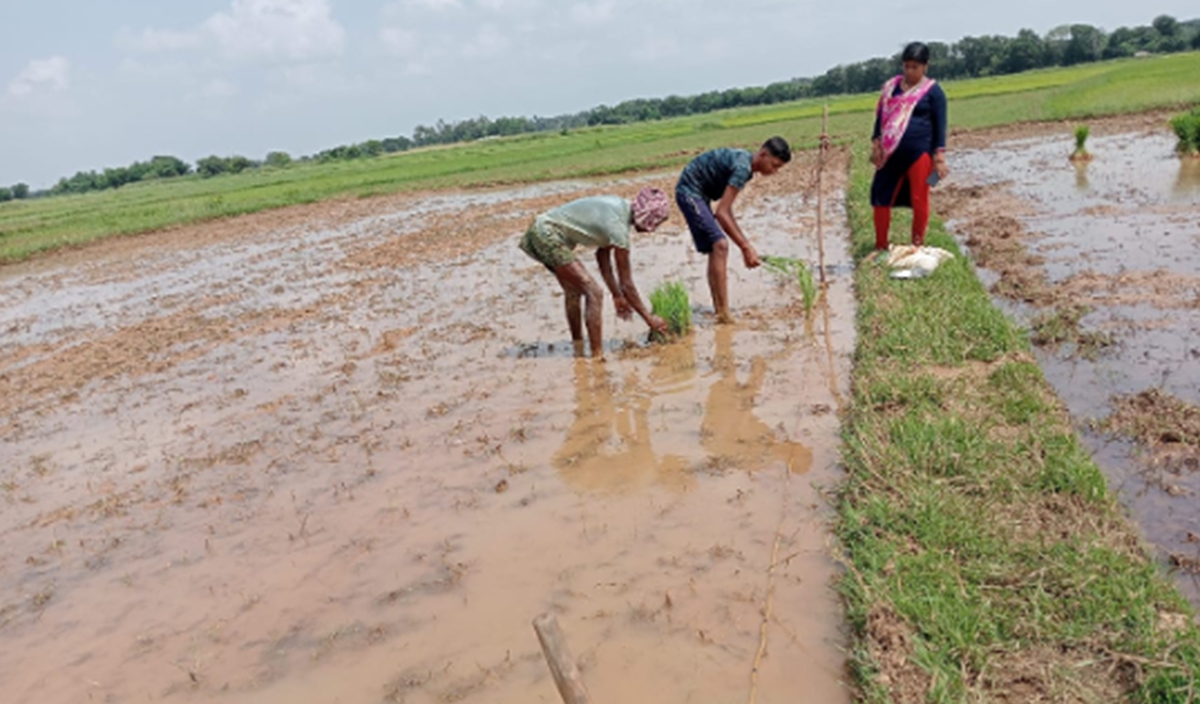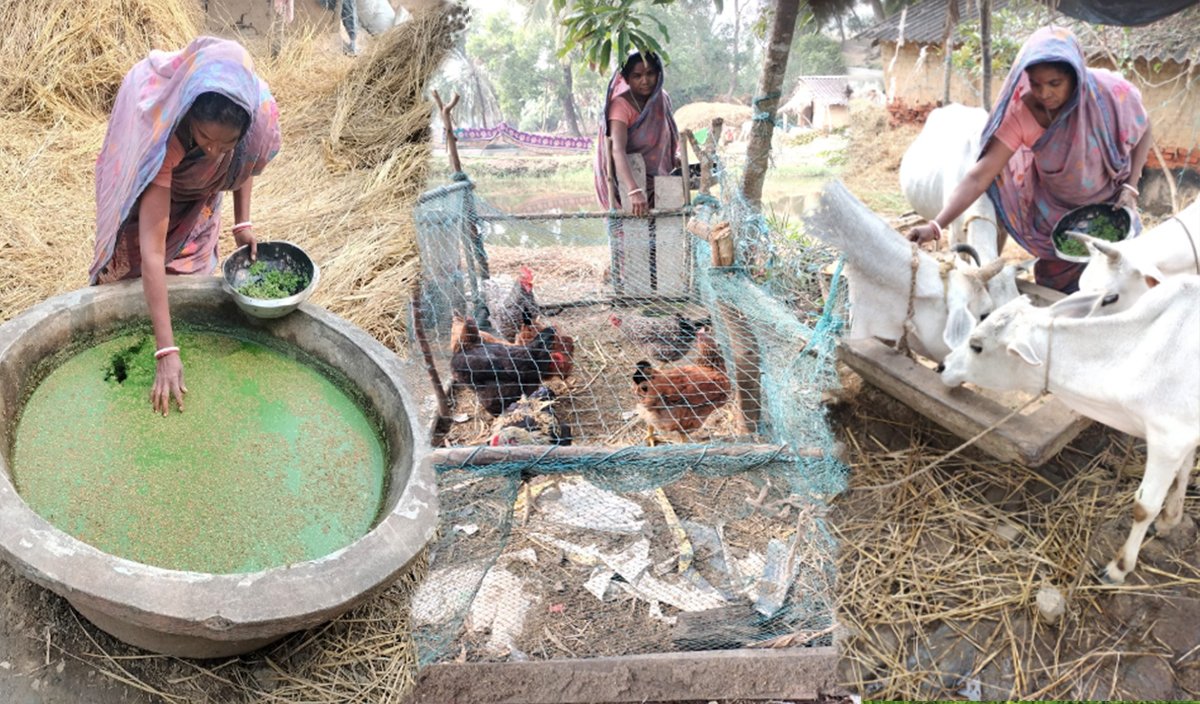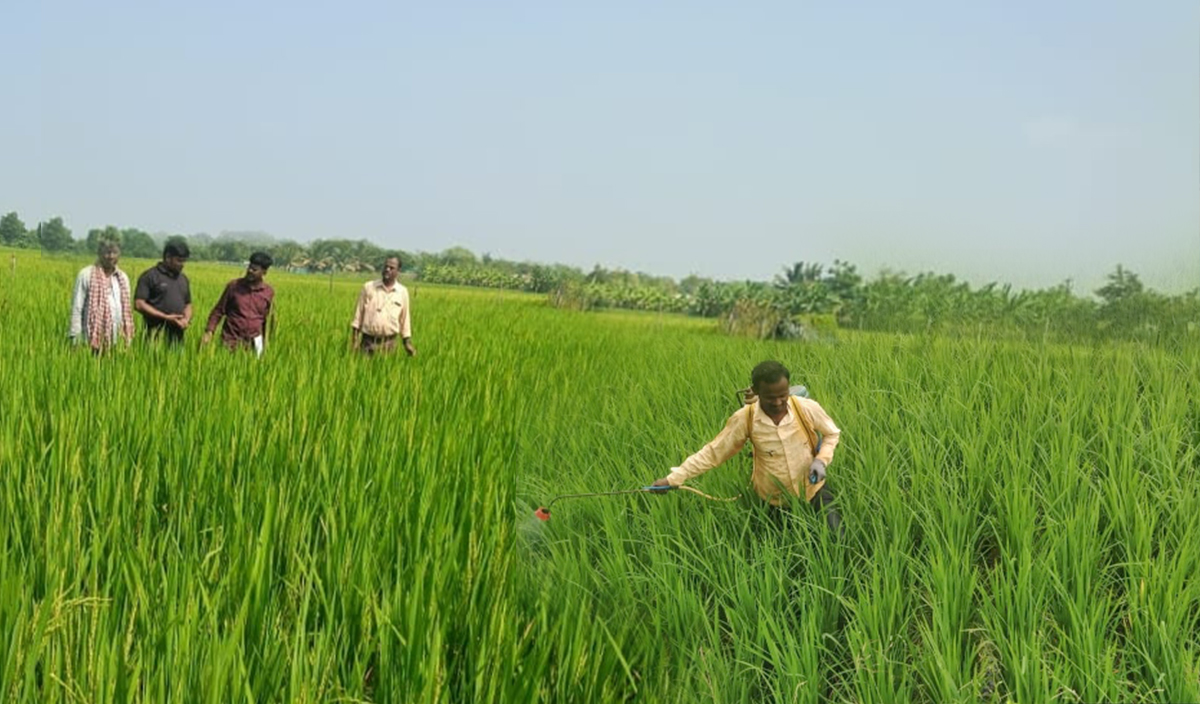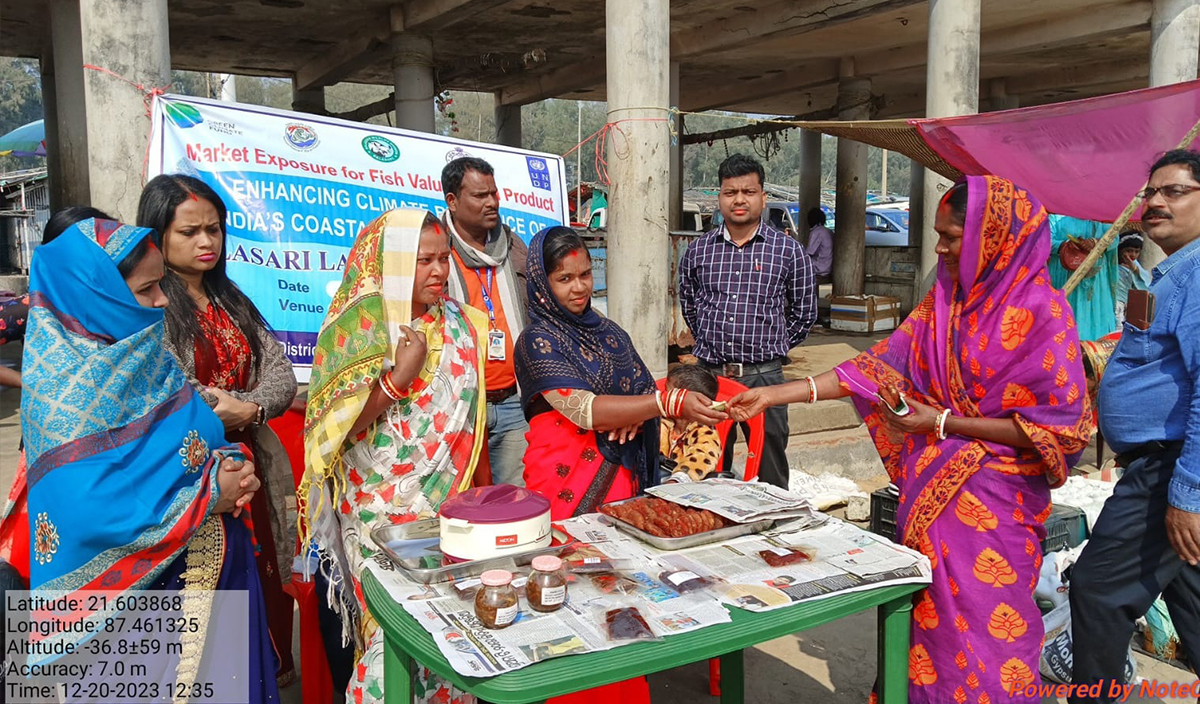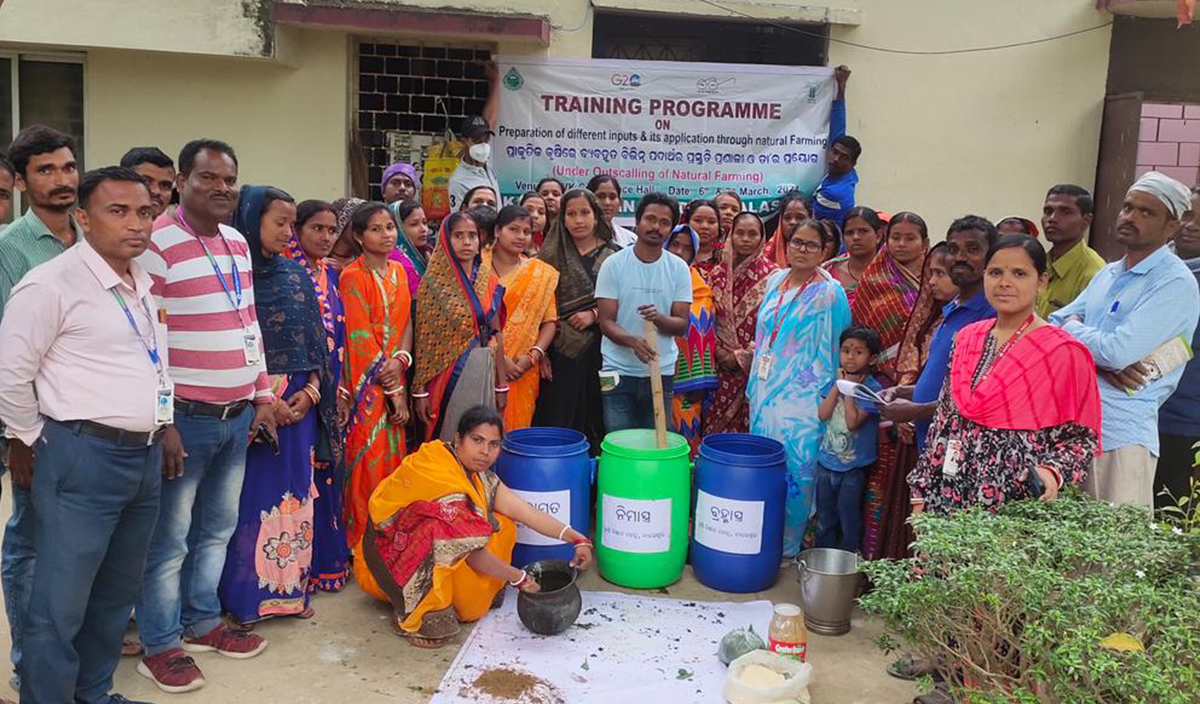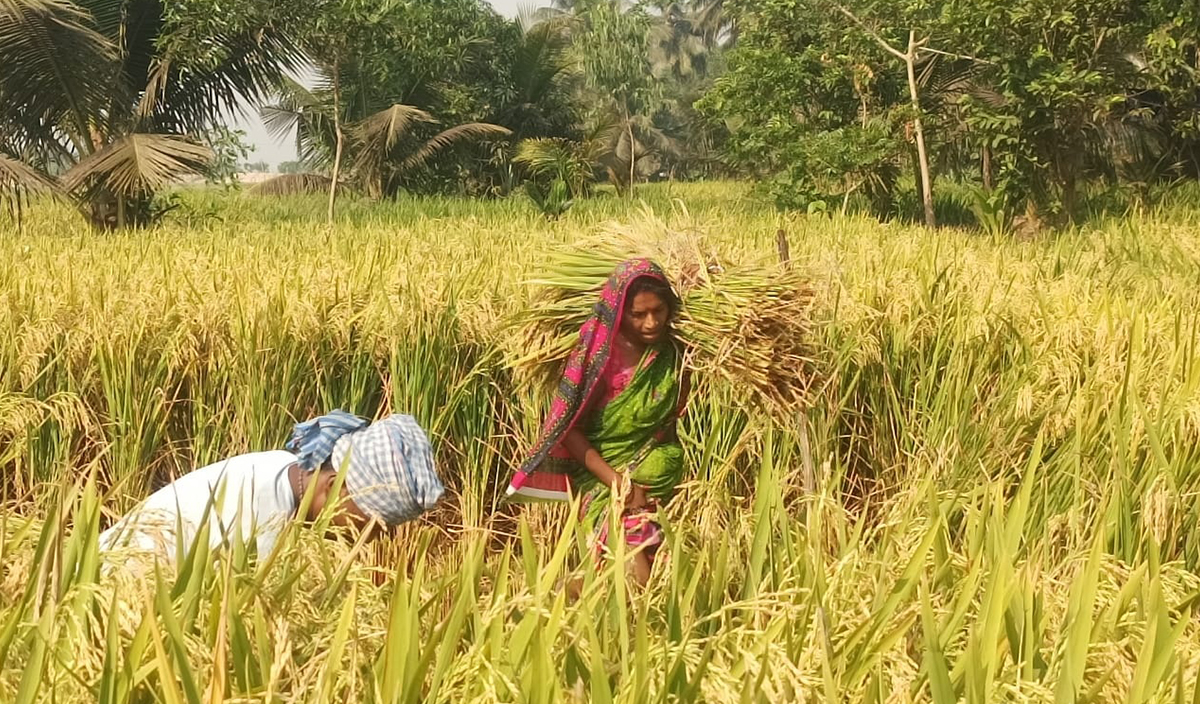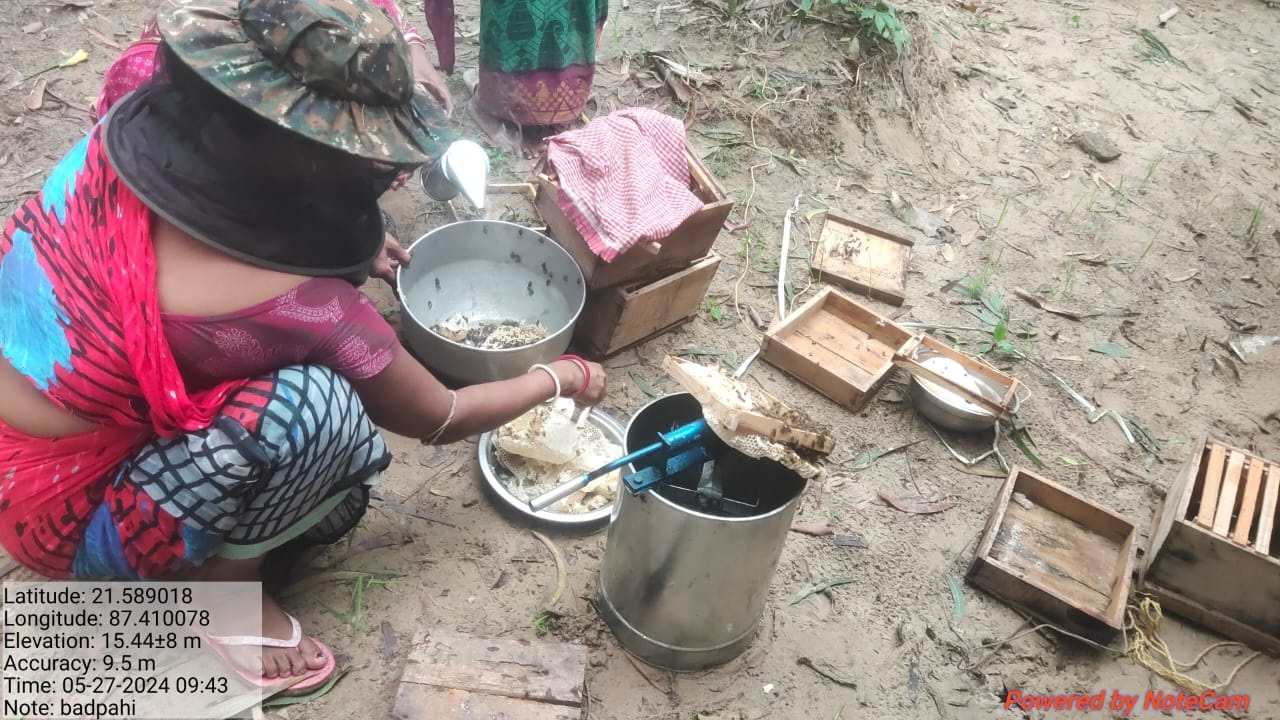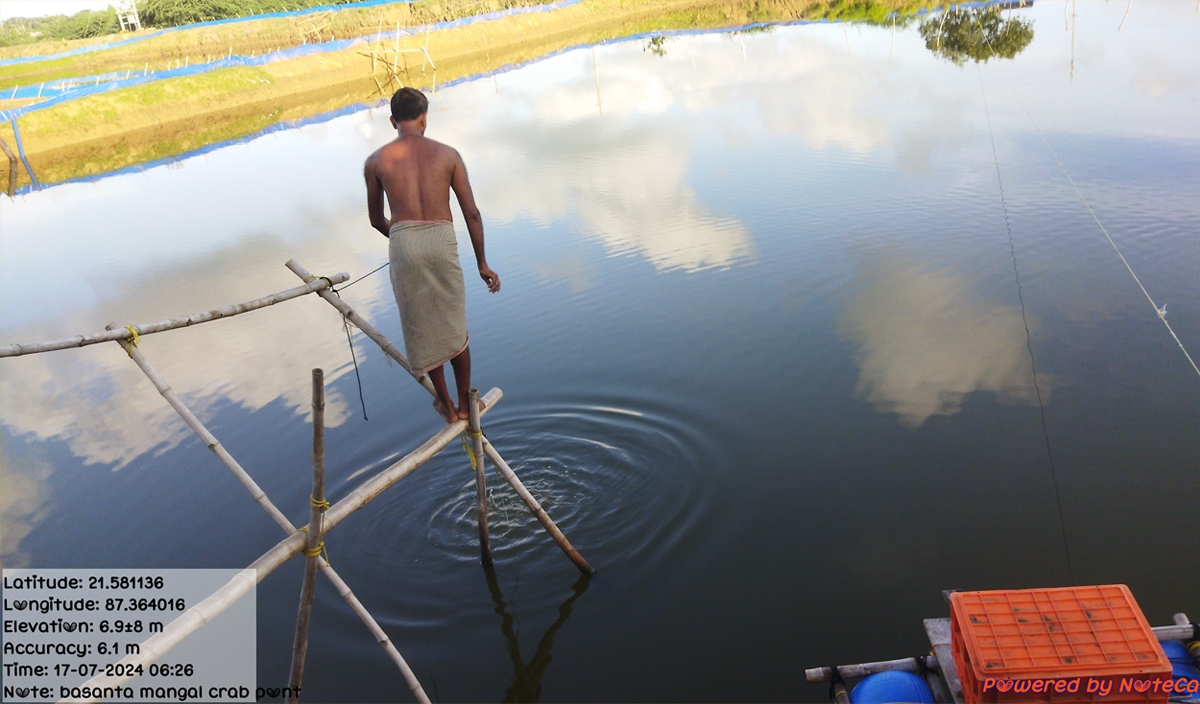SRI: A Spot of Optimism for Enhanced Output in Kusunpur
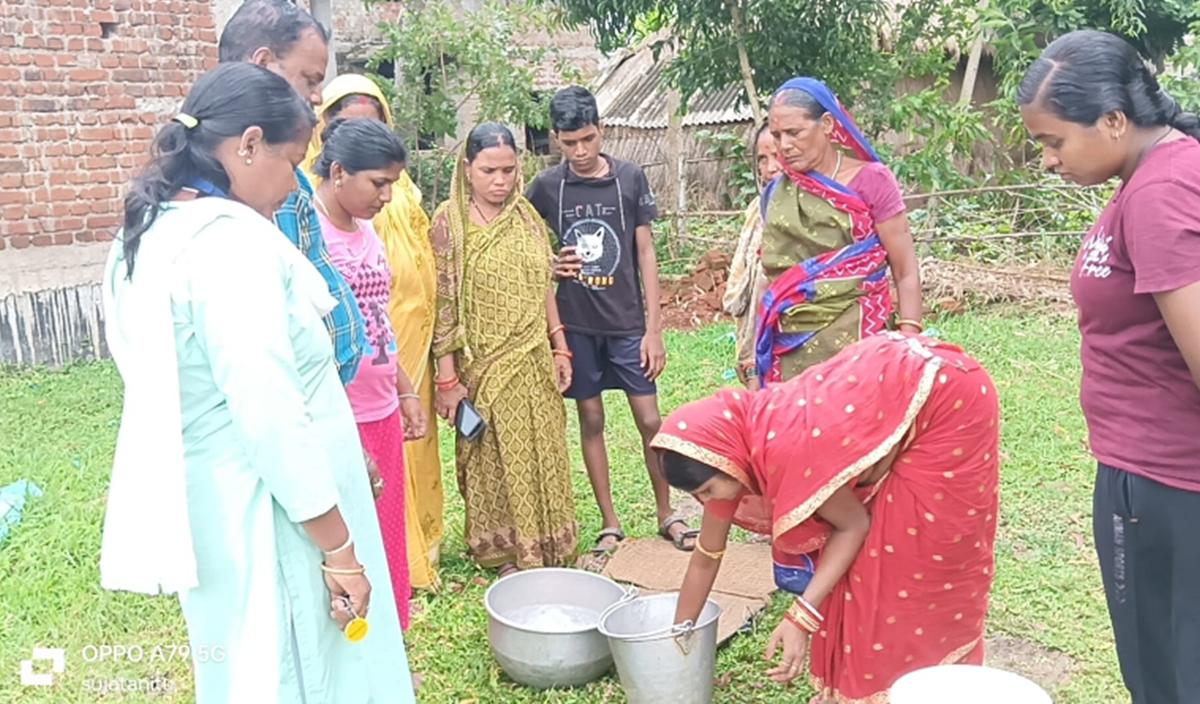
Farmers from the coastal rural regions of Odisha’s Kendrapara district faced a multitude of issues, most notably the entrapment of water along with the constant intrusion of cyclonic storms. The intertwining of these difficulties not only destroyed their paddy fields, but also resulted in negative yields and economic decline that made matters even worse. When compounded with the challenges of climate change, previously employed farming strategies were looking to be solely inadequate. Nonetheless, the implementation of the System Rice Intensification (SRI) through the ECRICC Project promised to change everything by offering farming practices, and even the region, a sustainable solution.
The Commencement of Transformation
For a home-maker and farmer like Ms Arnapurna Parida of Kusunpur, the prevailing ecosystem problems were a serious threat to her family. The cyclone ‘DANA’ often brought along crop destruction followed by saline water intrusion which accelerated soil degradation and decreased the yield of rice. These difficulties compelled Annapurna and her fellow farmers to adopt SRI, a novel approach that had the potential to increase output and build resilience against such setbacks. Though initially hesitant, Annapurna, with the help of community meetings and training, started seeing the value of SRI. The concept was new, but with the guidance of Climate Champion Madhusmita Parida, she began to embrace the change and test it on her fields.
Disrupting Farming Practices With SRI
Annapurna seated herself in multiple training sessions under Madhusmita and other experts from the ECRICC project. During these sessions, she was taught the salient principles of SRI which included, amongst others, the use of 12-day old seedlings, specific spacing to maximize growth, and banning the use of fertilizers chemical fertilizers, and instead encouraged the use organic manure. The method focused on efficient water usage and soil health, as is most essential in Kusunpur where water and soil quality are already alarming.
Annapurna adopted SRI techniques with the existing knowledge that she had, integrating them into her farm. She carefully planted the organic fertilizers and the rice seedlings. The new tactic required more precision and planning, but Annapurna was determined to achieve her goal.
The Results
-
Raise Agricultural Production:
The SRI method proved to be most effective, as Annapurna's overall yield increased significantly. The count of tillers increased. The crop was also much healthier compared to the other traditional methods. SRI had effectively solved the issues of low productivity alongside the issues of irrigation, seeds, and farming resources. -
Improvement in the Farmers Quality of Life:
The effects of adoption of SRI were equally beneficial for the aspects concerning the environment. Emissions of Methane, which is a big issue with rice farming, were significantly reduced through efficient use of water and reduction of chemical fertilizers. The soil was additionally improved to be more sustainable for future practices than before. Furthermore, the soil health and the ability to withstand cyclonic storms improved. -
Economic Expansion:
The adoption of SRI brought with it, an inherent increase in the family income by Annapurna. With the elevation of outputs and reduction of expenses, her farm became increasingly more valuable. She was also able to obtain government-sponsored assistance that facilitated her move to SRI, which enabled her to spend more on her children’s education and enhance the overall life quality for the family.
Annapurna’s story
Annapurna’s story is a testament of how adoption of SRI practices can transform a farm and the livelihood of the family. Her crops managed to perform significantly better than her neighbours’ fields who are completely dependent on Cyclone DANA. And with the assistance from Climate Champion Madhusmita Parida, Annapurna was not just able to improve her productivity but also became a role model to many farmers in her village of Kusunpur. Her achievements made it clear that – SRI was intrinsically useful to these people in agriculture despite the adverse weather conditions.
“I shall build my life, and the environment will be brought alive,” said Annapurna pointing to her commitment to leading a sustainable life and protecting the environment.
Confronting Adversity
SRI's resilience got tested when cyclone DANA unleashed havoc on Kusunpur, crippling crops on a large scale. On inspecting his fields, Annapurna was pleased to know that compared to the damage caused to rice fields that were practice adhered to in the other regions her traditional farming methods mitigated the impact of the cyclone on her fields. The rice cyclone reaped in conjunction with the healthy soil ensured that the rice trees were in a position to better battle the fundamental effect of the storm and carried with it thus reinforced the faith Annapurna had in the method.
Resilience Through Other Means
Her success has become a paradigm in multi-dimension impact of SRI innovations for Annapurna Parida in the region silenced by bordering climate driven atrocities. SRI enabled reduced expenditures while simultaneously increasing crop production. She has emerged as an icon for the agrarian residents of Kusunpur. This particular concern is towards the insurmountable adversities posed against the brute force of Mother Nature and the necessity of developing sustainable agriculture that can galvanize farming for even the most afflicted regions.
Annapurna’s tale encapsulates the essence of knowledge, indefatigable spirit, and creativity. By practicing and disseminating the advantages of SRI, she elevates not only the standard of living of her family but also encourages community members to adopt sustainable agricultural practices, thereby improving life in Kusunpur. With SRI, Annapurna has not just modernized her farm, she has opened the door to a bright new world for ‘Kusunpur’.


